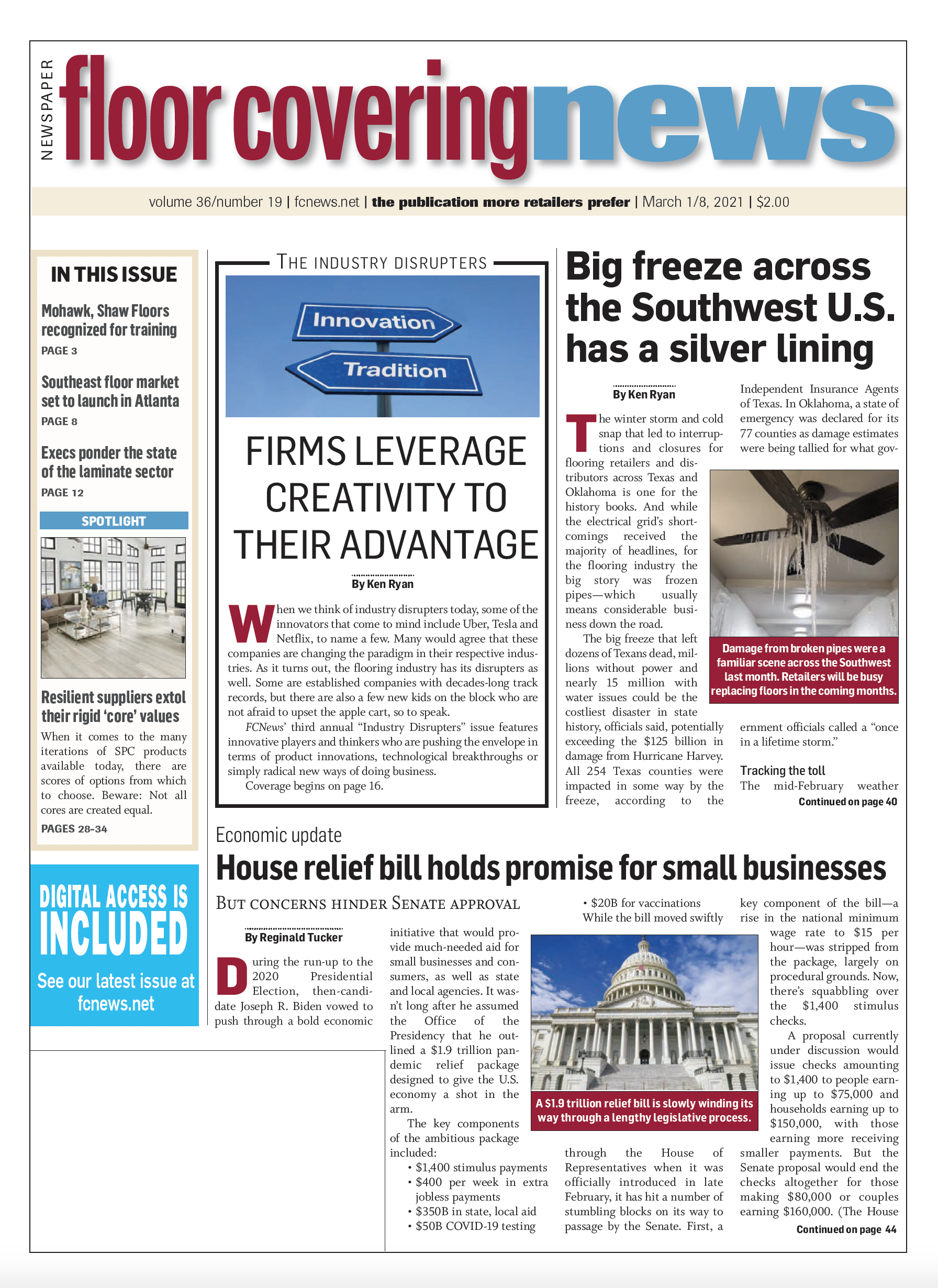 By Christopher Capobianco I’ve worked in several levels of our industry, from installation to retail to inspector to manufacturer’s rep. Over the years, I’ve been asked for a better price from clients. I get it: If you’re selling a product, lowering your price is an option to consider at times. Maybe you are helping out a good customer or beating a competitor to an order. It’s like my dad used to say, “Half a loaf is better than none.” It certainly applies in cases such as this. Sometimes we have to work for a little less and get the order rather than come up empty handed.
By Christopher Capobianco I’ve worked in several levels of our industry, from installation to retail to inspector to manufacturer’s rep. Over the years, I’ve been asked for a better price from clients. I get it: If you’re selling a product, lowering your price is an option to consider at times. Maybe you are helping out a good customer or beating a competitor to an order. It’s like my dad used to say, “Half a loaf is better than none.” It certainly applies in cases such as this. Sometimes we have to work for a little less and get the order rather than come up empty handed.
But have you thought about the labor? If your installers are skilled craftspeople and do the right thing with the right tools and operate “by the book,” it’s hard to ask them to do it for less. Then again, in my time as an inspector, I saw many cases of flooring failures related to cutting corners that were no doubt done to lower the price of the job. And I’ve heard from flooring dealers who’ve lost bids to companies that don’t have a skilled installation team.
Here are some ways to explain how to cut costs on installation. Take the layout, for example. Sure, you can make the fill pieces smaller and do the job with more seams. You can disregard placement of seams in a lower-traffic area or at the proper angle to a light source. Both options will save yardage and lower the cost of the job. (Oh, and don’t bother sealing those seams, either—that just adds extra time and cost and its usually not even necessary.)
What about using a cheaper adhesive? It doesn’t matter, right? Save a few pennies a square foot even though the product manufacturer has a specific recommendation.
Acclimation? Time is money, so we won’t get the product over to the job site a day or two before, even though that’s what the manufacturer recommends.
How about scaling back on substrate preparation? Or concrete moisture testing? No time for that! Besides, the floor looks dry and the patching compound is expensive these days.
All this sounds outrageous, but I think you catch my drift here. Doing the job right comes with a cost. I came up in the industry with a mom-and-pop family flooring retailer that lived on its reputation. People didn’t come back or recommend their friends because of our flashy ads or beautiful showroom—although we had both. They came back because they liked the finished product on the floor and the new customers came in because they saw or heard about our work at someone’s home or office. We had good installers who did the right thing and we did not have the lowest price in town.
There really is a difference when it comes to how floor coverings are installed. Can you do it for less? Maybe you can make a little less on the product, but not labor. For those clients who demand that you drop your prices, the answer should be, “Our installers are highly trained, do every job by the book, use the highest quality adhesives and the latest tools so you get the very best guaranteed installation possible. You can certainly find less skilled installers to work for less, but we cannot.”
The moral of the story is, even in a tough economy you can stand your ground and not give away labor. However, you’d better be doing it the right way so you can look someone in the eye and honestly say your installers are the best and you can’t discount their work.
Christopher Capobianco covers the New York Metro and Connecticut sales for Spartan Surfaces. He is a past FCICA chairman and a fourth-generation floor coverer whose family has been in the business since the 1930s.

